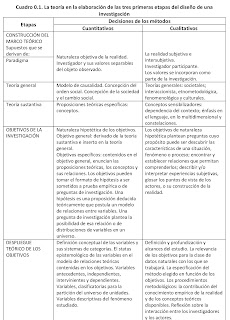De Landa, M. (2000). A thousand years of non linear history
De Landa, M. (2000). A
thousand years of non linear history (1a ed.). New York: Swerve Editions.
(De Landa, 2000)
11
Introduction
12
(…) Many
historians have abandoned their Eurocentrism and now question the very rise of
the West (…) and some have even left behind their anthropocentrism and include a
host of nonhuman histories in their accounts.
13
Philosophy
is not, however, the only discipline that has been influenced by a new
awareness of the role of historical processes. Science, too, has acquired a
historical consciousness. It is not an exaggeration to say that in the last two
or three decades, history has infiltrated physiscs, chemistry, and biology (…)
13-14
(…) both
classical thermodynamics and Darwinism admitted only one possible historical outcome,
the reaching of thermal equilibrium or of the fittest design. In both cases,
once this point was reached, historical processes ceased to count. In a sense,
optimal design or optimal distribution of energy represented an end of history
for these theories (…)
14
(…) the
move away from energetic equilibrium and linear causality has reinjected the
natural sciences with historical concerns. This book is an exploration of the
possibilities that might be opened to philosophical reflection by a similar
move in the social sciences in general and history in particular. These pages
explore the possibilities of a nonlinear and nonequilibrium history by tracing
the development of the West in three historical narratives (…)
15-16
(…) However
oversimplified this picture may be, it contains a significant clue as to the
nature of nonlinear history: if the different “stages” of human history were
indeed brought about by phase transitions, then they are not “stages” at all -that
is, progressive developmental steps, each better than the previous one, and
indeed leaving the previous one behind.
16
(…) even
the humblest forms of matter and energy have the potential for
self-organization (…) When put together, all these forms of spontaneous
structural generation suggest that inorganic matter is much more variable and
creative than we ever imagined. And this insight into matter’s inherent
creativity needs to be fully incorporated into our new materialist
philosophies.
17
(…)
however, what matters is not the planned results of decision making, but the unintended
collective consequences of human decisions.
21
In a real
sense, reality is a single matter-energy undergoing phase transitions of
various kinds, with each new layer of accumulated “stuff” simply enriching the
reservoir of nonlinear dynamics and nonlinear combinatorics available for the
generation of novel structures and processes (…) a philosophical meditation on
the history of matter-energy in its different forms and of the multiple
coexistences and interactions.
257
Conclusions
and speculations
260
We
repeatedly saw that hierarchies and meshworks occur mostly in mixtures, so it is
convenient to have a label to refer these changing combinations. If the
hierarchical components of the mix dominate over the meshwork components, we
may speak of a highly stratified structure, while the opposite combination will
be referred to as having a low degree of stratification (…) we may speak of a
given mixture as undergoing processes of destratification as well as restratification,
as its proportions of homogeneous and heterogeneous components change. Finally,
since what truly defines the real world (…) are the unformed and unstructured
flows form which these two derive (…) to this flowing reality animated from
within by self-organizing processes constituting a veritable nonorganic life:
the Body without Organs (BwO) (…)
262
I have
attempted here to describe Western history in the last one thousand years as a
series of processes occurring in th BwO: pidginizations, creolizations, and
standardizations in the flow of the norms; isolations, contacts and
institutionalizations in the flow of memes; domestications, feralizations, and
hybridizations in the flow of genes; and intensifications, accelerations, and
decelerations in the flows of energy and materials. Cities and their mineral
exoskeletons, their shortened food chains, and their dominant dialects are
among the structures we saw emerge form these nonlinear flows. Once in place,
they reacted back on the flows, either to inhibit them or to further stimulate
them.
265

Comentarios
Publicar un comentario